
The Boston Opera Company (BOC) was an American opera company located in Boston, Massachusetts, that was active from 1909 to 1915. [1]

The Boston Opera Company (BOC) was an American opera company located in Boston, Massachusetts, that was active from 1909 to 1915. [1]
The company was founded in 1908 by Bostonian millionaire Eben Dyer Jordan, Jr. and impresario Henry Russell. [1] [2] Jordan, an opera enthusiast and amateur singer, was the heir to a department store fortune and provided the company's financial backing for its first three seasons. He also provided the funds necessary to complete the Boston Opera House, as the theatre's construction had been halted for some years due to lack of finances. [1]
Russell had worked as a talent manager and opera director in Europe and from 1906 until 1909 his touring opera company, the San Carlo Opera Company (SCOC), had been based in Boston when not on the road. The SCOC was basically the artistic seed for the new Boston Opera Company as many artists working for this touring company, such as Alice Nielsen, Lillian Nordica, Florencio Constantino, and Louise Homer, became a part of the Boston Opera Company. The company's first performance was given for the opening of the Boston Opera House on November 8, 1909. The company presented Amilcare Ponchielli's La Gioconda with Nordica in the title role and Homer as La Cieca. [1]
In 1910 the BOC entered into a partnership with the Metropolitan Opera and the Chicago Grand Opera Company with the formation of an opera trust between the organizations and Russell officially being made an Advisory Associate to the Metropolitan Opera. The trust was established to help recruit and keep top talent from Europe. None of the companies could offer long enough performance engagements on their own to be attractive to the best singers, but by extending contracts to artists for performance between all three companies they were able to bring major talent from Europe to the United States. [3]
During its six seasons the BOC presented a wide array of works, including two contemporary operas by Boston composer Frederick Converse: The Pipe of Desire and The Sacrifice. Although the company was admired for its artistic excellence (largely due to the fine conducting by Felix Weingartner), the organization was plagued with financial worries after the initial backing by Jordan ended. These monetary problems eventually forced the company to declare bankruptcy on May 11, 1915. [1]
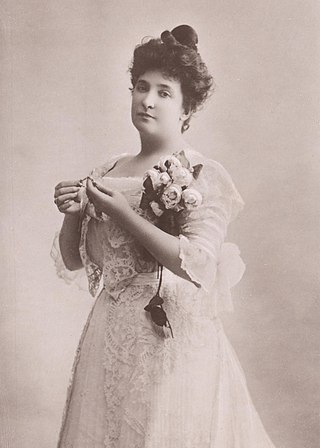
Dame Nellie Melba was an Australian operatic lyric coloratura soprano. She became one of the most famous singers of the late Victorian era and the early 20th century, and was the first Australian to achieve international recognition as a classical musician. She took the pseudonym "Melba" from Melbourne, her home town.

Alice Geraldine Farrar was an American lyric soprano who could also sing dramatic roles. She was noted for her beauty, acting ability, and "the intimate timbre of her voice." In the 1910s, she also found success as an actress in silent films. She had a large following among young women, who were nicknamed "Gerry-flappers".

La Gioconda is an opera in four acts by Amilcare Ponchielli set to an Italian libretto by Arrigo Boito, based on Angelo, Tyrant of Padua, a 1835 play in prose by Victor Hugo.
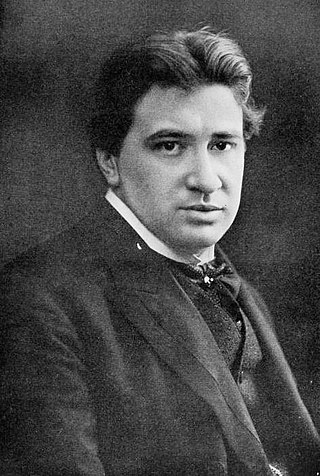
Il segreto di Susanna is an intermezzo in one act by Ermanno Wolf-Ferrari to an Italian libretto by Enrico Golisciani. The opera premiered in 1909 and is the most frequently performed of all of Wolf-Ferrari's works. The overture of the work has become a well known concert piece.The opera tell's the story of a husband who suspects his wife is having an affair after discovering she smells like cigarettes; only later to discover that her secret is that she is a smoker. Musicologist John C.G. Waterhouse, wrote the following: "Il segreto di Susanna owes its success partly to its disarming simplicity. Lasting barely 45 minutes, with only two singing characters, it is conveniently cheap to produce; and the slender but distinctive idea of the libretto, combined with the elegant if rather miscellaneous charm of the music, has an obvious appeal which even subsequent cancer research has not seriously undermined."
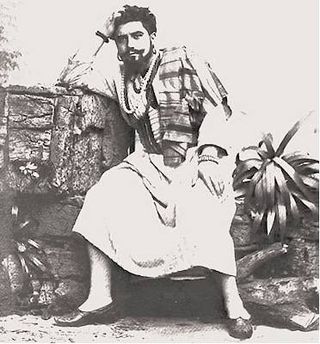
Maurice Arnold Renaud was a cultured French operatic baritone. He enjoyed an international reputation for the superlative quality of his singing and the brilliance of his acting.
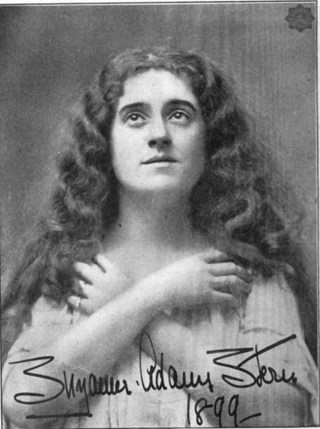
Suzanne Adams was an American lyric coloratura soprano. Known for her agile and pure voice, Adams first became well known in France before establishing herself as one of the Metropolitan Opera's leading sopranos at the beginning of the twentieth century.
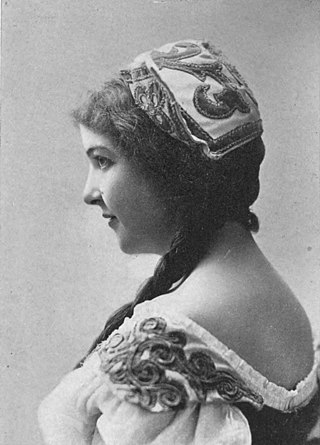
Alice Nielsen was an American Broadway performer and operatic soprano who had her own opera company and starred in several Victor Herbert operettas.

Louise Beatty Homer was an American operatic dramatic contralto who had an active international career in concert halls and opera houses from 1895 until her retirement in 1932.
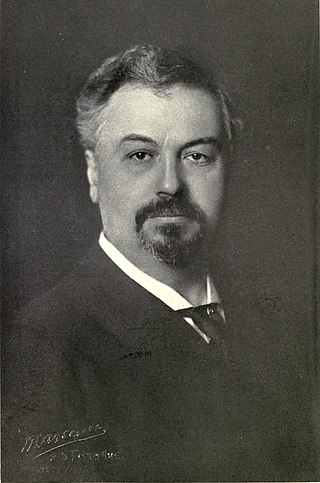
The Manhattan Opera Company was an opera company based in New York City. Active from 1906 until 1910, it was founded by Oscar Hammerstein I.

Cleofonte Campanini was an Italian conductor and violinist. As a teenager he had a brief but successful career as a concert violinist in Italy and in theaters in Berlin and London. He abandoned the violin in favor of pursuing a career as a conductor, making his conducting debut in 1880 at the age of 20. He established himself as an opera conductor in Parma in the early 1880s, conducting several works which starred his brother, the tenor Italo Campanini.
The San Carlo Opera Company was the name of two different opera companies active in the United States during the first half of the twentieth century.
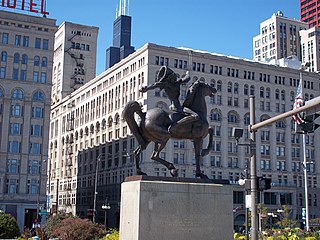
Two grand opera companies in Chicago, Illinois, have gone by the name Chicago Grand Opera Company during the first half of the 20th century. Like many opera ventures in Chicago, both succumbed to financial difficulties within a few years, and it wasn't until 1954 that a lasting company was formed in the city.

Henry Russell was an English impresario, conductor, director, and singing teacher.
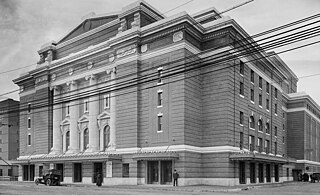
The Boston Opera House was an opera house located on Huntington Avenue in Boston, Massachusetts. It opened in 1909 as the home of the Boston Opera Company and was demolished in 1958 after years of disuse.
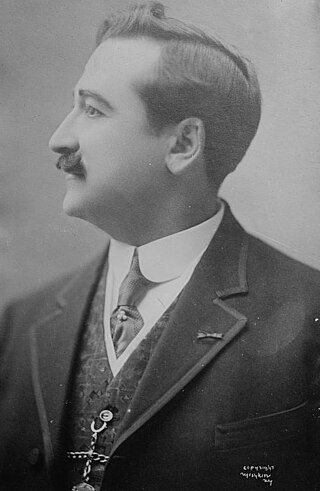
Florencio Constantino was a Spanish operatic tenor who had an active international performance career from 1892 through 1917. He was particularly admired for his performances in the operas of Giuseppe Verdi and Vincenzo Bellini; with the roles of the Duke of Mantua in Rigoletto and Arturo in I puritani being signature roles for the tenor.
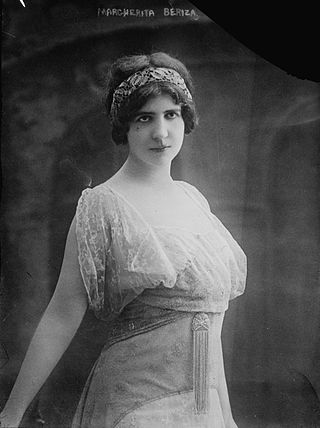
Marguerite Bériza (1879–1970) was a French opera singer who had an active international career during the first half of the 20th century. She began her career as a mezzo-soprano at the Opéra-Comique in 1900; ultimately transitioning into the leading soprano repertoire at that theatre in 1912. She performed extensively in the United States from 1914 to 1917 and was also heard as a guest artist at theatres in the French provinces, Monaco, Portugal, and Switzerland during her career. In 1924 she founded her own opera company in Paris with whom she actively performed up until 1930.

Lydia Yakolevna Lipkowska was a Russian operatic soprano of Ukrainian origin who had an active international career during the first half of the 20th century. A gifted lyric coloratura soprano, she performed leading roles at the Mariinsky Theatre, the Metropolitan Opera, the Royal Opera House, La Scala, and the Opéra-Comique among other theaters.

Myrna Docia Sharlow was an American soprano who had an active performance career in operas and concerts during the 1910s through the 1930s. She began her career in 1912 with the Boston Opera Company and became one of Chicago's more active sopranos from 1915–1920, and again in 1923–1924 and 1926–1927. She sang with several other important American opera companies during her career, including one season at the Metropolitan Opera. She made only a handful of opera appearances in Europe during her career, most notably singing in the English premiere of Riccardo Zandonai's Francesca da Rimini at Covent Garden in 1914. Her repertoire spanned a wide range from leading dramatic soprano roles to lighter lyric soprano fair and comprimario parts. She even performed a few roles traditionally sung by mezzo-sopranos or contraltos.
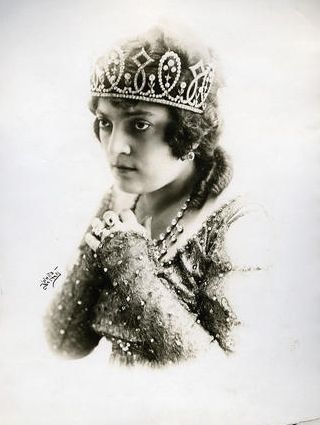
Luisa Villani was an Italian operatic soprano of American birth. She is best remembered for creating the role of Fiora in the world premiere of Italo Montemezzi's L'amore dei tre re at La Scala in 1913.